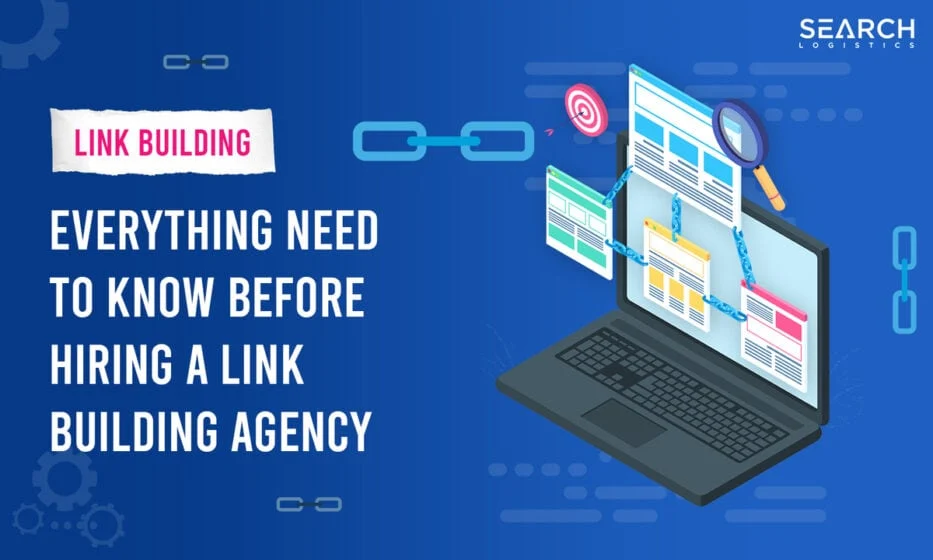
Introduction to Link Sites
Link sites are an integral part of the internet, serving as portals that connect various online resources. These platforms enable users to navigate from one website to another through hyperlinks, which are typically highlighted as clickable text or images. The significance of link sites extends beyond mere navigation; they play a crucial role in enhancing the interconnectedness of web content. Each link serves as a pathway that facilitates access to information, services, and products spread across millions of websites globally.
In the context of digital marketing and SEO, understanding link sites is essential for several reasons. Firstly, search engines like Google utilize algorithms that consider the quality and quantity of links when ranking websites. A website that is effectively linked to reputable link sites may enjoy better visibility in search engine result pages (SERPs), which can lead to increased traffic and ultimately more conversions. Thus, link sites can directly impact a site’s performance in terms of reach and engagement.
Moreover, link sites provide valuable resources for web development and digital marketing professionals. They can serve as directories, repositories of information, or collections of valuable content that can be easily accessed by users looking for specific topics or services. Additionally, link sites often feature user-generated submissions, promoting a community-driven aspect where individuals can share pertinent links relevant to a niche or industry.
In conclusion, for anyone pursuing a career in web development, SEO, or digital marketing, gaining knowledge about link sites is crucial. By understanding their functionality and significance, professionals can leverage these platforms to enhance their online strategies, optimize their website performance, and offer better user experiences through improved connectivity. Recognizing the role of link sites is instrumental in navigating the complex digital landscape.
Types of Link Sites
Link sites play a crucial role in the digital landscape, serving various purposes and catering to different user needs. Understanding the different types of link sites can significantly enhance one’s ability to navigate the vast expanse of the internet and leverage these resources effectively. The primary categories of link sites include directories, social bookmarking sites, and content aggregation platforms.
강남셔츠룸 Directories are some of the earliest forms of link sites, designed to categorize websites into various sections based on topics or industries. Users can browse through these sections to discover relevant content easily. Directories often maintain a structured format, making navigation intuitive. Examples of such directories include DMOZ and Yahoo Directory, which have been pivotal in helping users locate websites systematically.Content aggregation sites act as curators, compiling content from various sources and presenting it in a consolidated format for users. These sites are beneficial for those looking for rich information and diverse perspectives on a single topic without having to visit multiple websites. Examples include Feedly and Flipboard, which allow users to customize their feeds based on interest categories, providing a tailored experience that enhances user engagement.
Each type of link site fulfills a unique function and serves different user needs. By recognizing these categories, users can make informed decisions about where to find the information they seek, thereby improving their overall online experience. Understanding these distinctions can help individuals efficiently navigate various resources available on the Internet.
Understanding Link Structure
Effective link structure plays a crucial role in the functionality and visibility of link sites within the realm of Search Engine Optimization (SEO). At the core of this structure are several fundamental components, including anchor text, URLs, and HTML structures, each contributing to how these sites are perceived by both search engines and users. Anchor text refers to the clickable text within a hyperlink. Its relevance and context can significantly influence a site’s ranking on search engine results pages (SERPs). Utilizing keyword-rich anchor text not only enhances user experience by providing context but also aids search engines in determining the linked content’s relevance.
Next, URLs serve as the addresses where users can access the linked content. An optimized URL structure is both user-friendly and easily interpreted by search engines. Short, descriptive URLs that include relevant keywords can lead to improved rankings, as they convey the content’s purpose at a glance. Additionally, incorporating hyphens to separate words within URLs enhances readability, making it simpler for users and bots alike to navigate through the site.
Furthermore, the HTML structure of a link site is another pivotal element. Utilizing proper HTML tags and structures not only maintains the site’s organization but also ensures that search engine crawlers can effectively parse and index the content. This includes the use of heading tags, image alt attributes, and internal linking strategies, which can all contribute to a better user experience and improved SEO performance.
To optimize link structures for better visibility, it is essential to maintain comprehensive and relevant interlinking while ensuring that all components are cohesive. Therefore, a well-structured link site not only aids in higher search engine rankings but also enhances the overall user experience, making it easier for visitors to navigate and find the content they seek.
Popular Linking Techniques
Linking techniques play an essential role in any effective digital marketing strategy, enabling websites to enhance their visibility, authority, and traffic. Among various methods, backlinking, internal linking, and collaboration with other sites stand out as some of the most popular and effective ways to create and share links.
Backlinking involves obtaining links from other websites that direct traffic to your site. This process is pivotal for establishing domain authority, as search engines like Google view backlinks as votes of confidence. A site with a higher number of quality backlinks is often ranked higher in search engine results, thereby attracting more visitors. To succeed in backlinking, it is vital to focus on acquiring links from reputable sources related to your niche, ensuring that the links enhance credibility and relevance.
Internal linking refers to the practice of linking to other pages within your own website. This technique not only helps distribute page authority across your site but also enhances user experience by providing additional navigation paths. A well-structured internal linking strategy can improve dwell time and reduce bounce rates, both of which are indicators of quality content. Furthermore, it allows search engines to crawl your site more effectively, indexing additional pages and improving overall searchability.
Collaboration with other websites is another popular linking technique, often involving guest blogging or co-marketing initiatives. By partnering with influencers or brands that share a similar target audience, you can secure valuable links and expose your content to a broader audience. Such collaborations not only foster relationships within the industry but can also lead to high-quality backlinks that significantly boost your site’s authority and traffic.
Each of these linking techniques is vital for improving a website’s overall performance. By understanding and effectively utilizing them, website owners can enhance their link profile and build a solid online presence.
Tools for Finding Link Sites
In the realm of digital marketing and search engine optimization (SEO), finding link sites is essential for enhancing online visibility and improving website authority. Various tools have been developed to assist users in discovering these valuable link resources. This section introduces several key tools that can play a critical role in locating link sites effectively.
One of the prominent tools for link site discovery is Ahrefs. This comprehensive SEO platform provides an extensive link analysis database, allowing users to explore backlinks, track competitors, and identify potential link-building opportunities. Ahrefs’ Site Explorer feature enables users to input any URL and acquire insights into the referring domains and the quality of links, making it an invaluable resource for effective link management.
Another useful tool is SEMrush, renowned for its multifaceted approach to digital marketing analytics. SEMrush incorporates a backlink analysis tool which permits users to uncover the link profiles of their websites, as well as those of competitors. With features such as the Backlink Audit tool, users can assess the quality of their backlinks and strategize on how to acquire high-value link sites.
Majestic is another noteworthy option that specializes in link intelligence. It offers a unique metric known as Trust Flow, which assesses the quality of links based on their context within the web. Users can leverage Majestic’s extensive database to find niche-specific link sites, enhancing their link-building efforts.
Lastly, web crawlers like Scrapy or Octoparse provide users with the capacity to scrape link data from various websites. These tools can effectively gather information on links and assets across several domains, enabling users to discover new link site opportunities based on specific keywords or topics.
The Role of Social Media in Link Discovery
Social media platforms have increasingly become integral tools for link discovery in the modern digital landscape. As numerous users engage with these platforms daily, they offer a unique opportunity to identify and share valuable content, which translates to obtaining quality links. By leveraging popular social networking sites such as Facebook, Twitter, LinkedIn, and Instagram, users can uncover new link opportunities. This not only enhances the process of acquiring links but also broadens the reach of their content.
One of the primary ways to utilize social media for link discovery is by actively participating in niche-specific groups and communities. These groups often share industry-relevant content, including articles, blogs, and resources that can be beneficial for link building. Furthermore, many online platforms allow users to ask questions, engage in discussions, and seek recommendations for valuable links. This interaction fosters connections and can lead to collaborations that enhance link acquisition strategies.
Additionally, social media plays a critical role in amplifying content visibility. When high-quality content is shared across various social platforms, it has the potential to gain traction, attracting attention from influencers and other site owners. Such exposure not only helps in directly acquiring links but also contributes to building social signals that can positively impact SEO. Search engines often consider social engagement as a metric of content relevance and authority, which in turn influences SERP rankings.
Moreover, content curation on social media allows users to discover trending topics and popular resources within their industry. By identifying the most shared content, users can emulate successful strategies and create their own content that is likely to gain links. In this way, social media serves as a valuable tool for both discovering link sites and enhancing online visibility.
Evaluating Link Quality
When embarking on a journey to find link sites, evaluating the quality of each link is crucial. High-quality links can significantly impact a website’s search engine rankings and overall visibility. Several criteria can be applied to determine the value of a link, including domain authority, relevance, trustworthiness, and user engagement metrics.
Domain authority (DA) is a score developed by Moz that predicts how well a website will rank on search engine result pages (SERPs). A higher DA indicates a more powerful site, which can contribute positively to the link equity passed through the link. Tools such as Moz, Ahrefs, and SEMrush provide insights into DA and allow webmasters to compare the strength of potential link sources.
Relevance is another important factor in link evaluation. A link from a site that is thematically relevant to your content carries more weight than one from an unrelated source. Search engines value links that are contextually connected, so evaluating the niche or industry of the linking site can help you prioritize your link-building efforts effectively.
Trustworthiness relates to the overall reputation of the link site. Websites that are well-respected and have a clean link profile are more likely to be seen as credible source by search engines. You can assess trustworthiness by reviewing the history of the site, the quality of its content, and its overall engagement within the industry.
Lastly, user engagement metrics such as bounce rate, average time spent on a page, and social shares can also serve as indicators of link quality. Links from sites that have high user engagement are more valuable, as they suggest that visitors find the content useful and relevant. These metrics can often be accessed through analytics tools, providing further insights into potential link sources.
In summary, by focusing on these criteria—domain authority, relevance, trustworthiness, and user engagement—marketers can refine their link acquisition strategies and secure high-quality backlinks that enhance their online visibility and credibility.
Legal and Ethical Considerations
In the modern landscape of digital marketing, understanding the legal and ethical considerations surrounding link building and link sites is essential. With the availability of numerous platforms to obtain backlinks, marketers and webmasters must exercise caution to ensure compliance with established guidelines and regulations. Engaging in spammy practices, such as acquiring links from low-quality or unrelated sites, can lead to severe repercussions including penalties from search engines and potential legal issues.
One significant legal aspect involves adhering to the principles set forth by search engines, which advocate for transparency and integrity in link building. Practices that involve deceptive tactics—such as cloaking, link farms, or paid links that are not properly disclosed—are not only ethically questionable but can also contravene regulations like the Federal Trade Commission (FTC) guidelines, which require full disclosure of paid endorsements. As such, cultivating a strategy that emphasizes quality over quantity is paramount for maintaining both legal compliance and moral integrity.
Moreover, ethical considerations extend beyond merely following legal frameworks; they also involve fostering a positive and respectful online environment. This includes avoiding links from sites that may propagate misinformation, fraud, or harmful content. A reputable webmaster should strive to direct traffic to valuable and credible sources, thereby enhancing the overall quality of the internet. Failure to adhere to these ethical standards can tarnish one’s reputation and undermine the effectiveness of a link building strategy.
Ultimately, navigating the complex web of link sites requires a commitment to ethical practices and adherence to legal statutes, ensuring the sustainability of successful link building efforts. By prioritizing integrity and compliance, marketers can both safeguard their businesses and contribute to the overall health of the digital ecosystem.
Future of Link Sites
The future of link sites is poised to undergo significant transformations, driven by rapid advancements in technology, algorithm refinements, and shifts in user behaviors. As search engines continue to evolve, we can expect link building strategies to adapt accordingly. The proliferation of artificial intelligence (AI) and machine learning is anticipated to play a pivotal role in shaping the landscape of link sites. These technologies may enable more personalized content delivery, further influencing how links are created and utilized across platforms.
In addition to AI, the rise of voice search and mobile browsing will likely result in alterations to traditional linking strategies. As users increasingly access information through smart devices, link sites may need to prioritize mobile optimization and user experience to remain competitive. This change could lead to a greater emphasis on local search results, impacting the relevance and placement of links, especially for businesses targeting mobile audiences.
Moreover, ongoing updates to search engine algorithms will continue to refine the criteria for quality links. The emphasis on authentic, high-quality content is expected to intensify, pushing link sites to move away from spammy or irrelevant links. This trend indicates a future in which quality outweighs quantity, steering link sites towards more meaningful engagements between content creators, businesses, and their audiences.
Lastly, shifting user behaviors will significantly influence the structure and effectiveness of link sites. As users become more discerning, they will likely favor sites that prioritize transparency, community engagement, and valuable content. This change suggests a future in which the ethics of link building and the nurturing of genuine relationships will be crucial for sustaining link site credibility and effectiveness. In conclusion, the dynamic landscape of the digital world will necessitate innovative link strategies focused on quality, user experience, and ethical practices in the coming years.





bp9601
2plgia
Hello.This article was extremely motivating, especially because I was searching for thoughts on this issue last Friday.